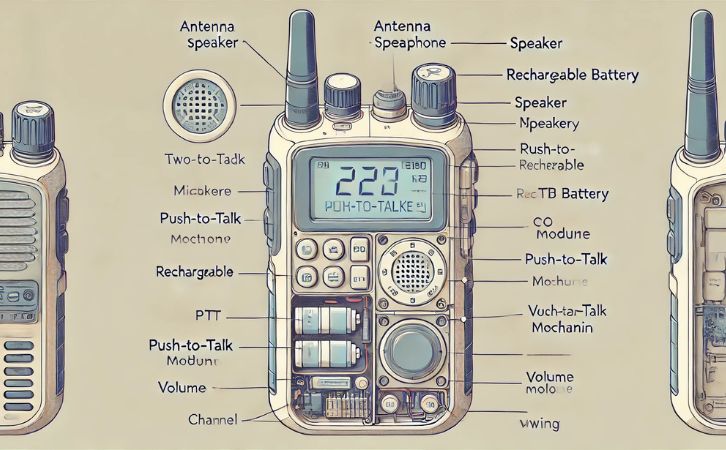The maximum range of a walkie-talkie is highly variable and depends on multiple technical and environmental factors. Below is a detailed analysis based on the provided evidence:
1. Typical Maximum Ranges by Walkie-Talkie Type
Civilian Walkie-Talkies:
Transmission power: ≤1W (regulated by law).
Maximum range: 2–5 km in open areas, but often reduced to 0.5–3 km in urban or obstructed environments .
Example: FRS (Family Radio Service) devices typically claim up to 2 miles (~3.2 km) under ideal conditions .
Commercial/Professional Walkie-Talkies:
Transmission power: 0.5–4W.
Maximum range: 800 meters to 8 km, depending on terrain and power output .
UHF (Ultra High Frequency) models excel in urban environments due to better wall penetration, while VHF (Very High Frequency) performs better in open areas .
Military/High-Powered Walkie-Talkies:
Transmission power: 5W or higher.
Maximum range: Up to 15 km in open terrain (e.g., China’s 702 military walkie-talkie during the Korean War) . Some commercial models advertise ranges of 30–50 km, but these claims are theoretical and rarely achievable in real-world conditions .
2. Key Factors Affecting Range
a. Technical Specifications
Power Output: Higher wattage (e.g., 5W vs. 0.5W) extends range but drains batteries faster. For example, a 5W device can cover ~30% farther than a 2W model in open areas .
Antenna Efficiency:
High-gain or longer antennas improve signal strength. Mismatched antennas (e.g., incorrect frequency band) reduce range by up to 50% .
Helical antennas in handheld devices are less efficient than external or whip antennas .
Frequency Band:
VHF (136–174 MHz): Better for open fields (e.g., 6+ km in flat terrain) .
UHF (400–512 MHz): Better for urban areas with obstacles, but shorter range (~3–5 km) .
Battery Health: Low battery levels reduce transmission power and signal clarity, shortening effective range .
b. Environmental Factors
Terrain:
Open fields allow maximum range (e.g., 10 km for VHF), while mountains or forests may reduce it to 1–2 km .
Urban environments with buildings can limit UHF devices to ≤1 km .
Obstacles: Concrete walls, metal structures, and dense foliage absorb or reflect signals. For example, inside a car, range may drop by 80% .
Weather: Rain, humidity, and fog attenuate signals, reducing range by 10–20% .
Interference: Electromagnetic noise from Wi-Fi, power lines, or other radios disrupts communication .
3. Maximizing Walkie-Talkie Range
Select the Right Device:
Use UHF for cities and VHF for rural areas .
Opt for GMRS (General Mobile Radio Service) with a license for higher power (up to 5W) and longer range .
Optimize Antennas: Replace stock antennas with high-gain or external ones .
Elevate Position: Higher elevation (e.g., hilltops) minimizes obstructions .
Avoid Interference: Use less crowded channels and keep devices away from electronics .
Battery Management: Use fully charged batteries and carry spares for extended use .
4. Real-World vs. Advertised Range
Manufacturers often advertise ranges under ideal “line-of-sight” conditions (e.g., 50 km claims), but real-world performance is typically 30–50% lower due to obstacles and interference . For example, a 5W UHF walkie-talkie advertised for 10 km may only achieve 3–5 km in a city .
5. Conclusion
The maximum range of walkie-talkies spans 0.5 km (urban) to 15 km (military/open terrain), with most consumer devices operating within 2–8 km. Achieving optimal performance requires balancing technical specifications (power, antenna, frequency) with environmental adaptations (elevation, obstacle avoidance). Always test devices in your specific use case to gauge realistic range .

